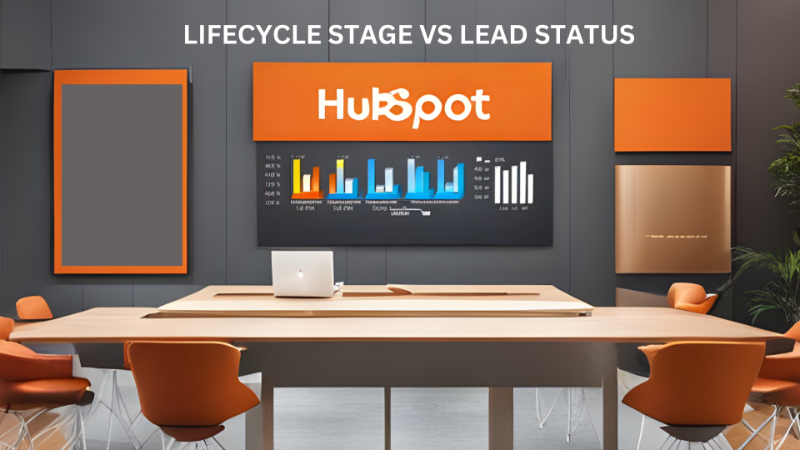
In the intricate landscape of B2B marketing, the terminologies and frameworks can sometimes feel like a maze. Among the essential concepts for aligning business leaders in sales, marketing, and service are lifecycle stages and lead statuses. These two categories serve as cornerstones for understanding customer progression, optimizing processes, and enhancing overall business performance.
Lifecycle Stage vs. Lead Status: A Strategic Foundation
At the heart of effective sales and marketing alignment lies the differentiation between lifecycle stages and lead statuses. These concepts provide a structured approach to managing customer interactions throughout their journey and ensuring seamless handoffs between departments.
Defining Lifecycle Stages
Lifecycle stages classify contacts based on their position in the buyer's journey. This classification not only guides sales and marketing efforts but also safeguards against unwanted engagement. By employing lifecycle stages, you can tailor interactions to match the specific needs of each contact.
For instance, consider a comprehensive framework like the Technical Lifecycle Journey Map. This map facilitates alignment among sales, marketing, and service leaders, fostering a shared understanding of the customer journey. This clarity empowers you to take actions like excluding irrelevant contacts, such as employees or bad-fit prospects, from your nurturing funnels.
The lifecycle stages may encompass the following:
1. Visitor: Anyone coming to your website, regardless of the channel.
2. Subscriber: Individuals who have submitted a form on your website to receive a newsletter, etc.
3. Lead: Contacts that match your Ideal Customer Profile (ICP) and MQL demographics but lack sufficient buying intent.
4. Marketing Qualified Lead (MQL): Leads meeting specified criteria and exhibiting a lead score of 100+, this can vary according to businesses.
5. Sales Qualified Lead (SQL): Contacts with which communication has been made (e.g., booked a Discovery meeting)
6. Opportunity: Contacts associated with a deal in your CRM system are considered to be an Opportunity.
7. Customer: Individuals who have signed a contract and made a purchase.
8. Evangelist: Contacts who advocate for your product or service.
9. Other: A category for contacts that have opted out or been disqualified.
Understanding Lead Status
Lead status, on the other hand, is intricately tied to your sales team's actions within the Sales Qualified Lead (SQL) lifecycle stage. These statuses capture the specific progress of each lead in the sales process, reflecting the actions taken by your sales representatives.
In platforms like HubSpot, you often find default lead status categories such as "New," "Open," "In Progress," "Open Deal," "Unqualified," "Attempted to Contact," "Connected," and "Bad Timing." Customization is possible based on your unique sales process.
The Strategic Benefits of Alignment
Standardizing lifecycle stages and lead statuses yields an array of advantages, ranging from comprehensive reporting to streamlined transitions across departments. Clear definitions pave the way for smooth shifts from marketing to sales and from sales to service. Additionally, they facilitate the creation of service-level agreements, fostering collaboration between different departments.
Navigating Progression: How Contacts Move
In platforms like HubSpot, contacts can naturally progress through stages without manual intervention, thanks to automated triggers. For instance:
1. Associating a deal with a contact or company updates the lifecycle stage to 'Opportunity.'
2. When a deal reaches the "Closed-Won" status, the lifecycle stage shifts to 'Customer.'
By confirming definitions, owners, triggers, and data indicators, you can create your own automation via workflows for moving lifecycle stages.
Enhancing Funnel Performance
The journey through lifecycle stages is a critical component of maintaining consistent data collection and identifying bottlenecks in the buyer's journey. If a significant number of MQLs fail to convert to SQLs, this signals a potential mismatch between your Lead and MQL criteria and your actual ideal customers.
Similarly, a lack of conversion from subscribers to leads indicates a need for your content marketing team to rethink their approach. The lifecycle journey map empowers your organization to fine-tune strategies, making the customer experience seamless and personalized.
Using Lead Statuses
As the sales equation progresses, lead statuses come to the forefront, detailing the intricate steps your sales team takes to convert SQLs into Opportunities and ultimately into Customers. Unlike lifecycle stages, lead statuses are fully customizable, allowing you to align them with your specific sales process.
Through the Technical Lifecycle Journey Map exercise, businesses can map out their sales process steps, establish sequences and task queues, validate lead scoring, and create customized lead statuses and deal flows. Integrating lead statuses into workflows and automation amplifies lead tracking and reporting capabilities, revolutionizing sales analysis and optimization.
How does it help RevOps?
A shared understanding of lifecycle journey definitions, triggers, and behaviors among sales, marketing, and service teams lays the foundation for successful automation and workflows. This collaborative effort empowers platform teams to create systems that address contact bottlenecks and ensure seamless progression to sales calls.
Once contacts enter the sales process, the clarity provided by lead status definitions fosters ongoing improvement and optimization in terms of people, processes, and platforms. These definitions, while only a fraction of the landscape, play a pivotal role in crafting a high-converting Revenue Operations (RevOps) organization.
Conclusion
Comprehending the distinctions between lifecycle stages and lead statuses is imperative for business leaders seeking alignment and operational excellence. By implementing standardized frameworks, documenting processes, and fostering collaboration across departments, organizations can unlock the true potential of their sales and marketing efforts, resulting in a seamless and personalized customer journey.


